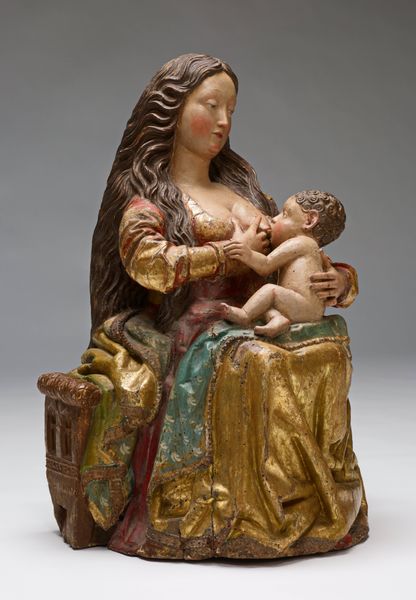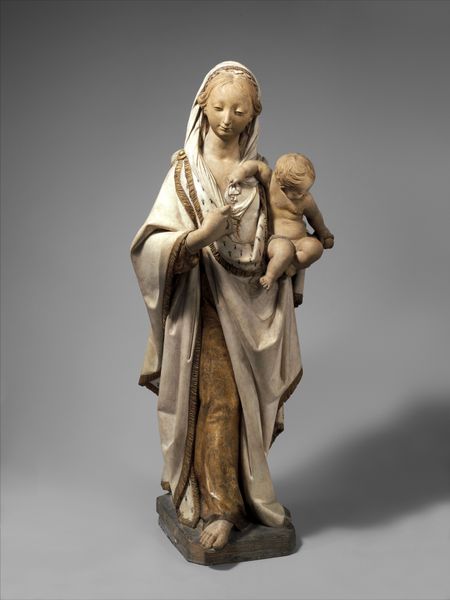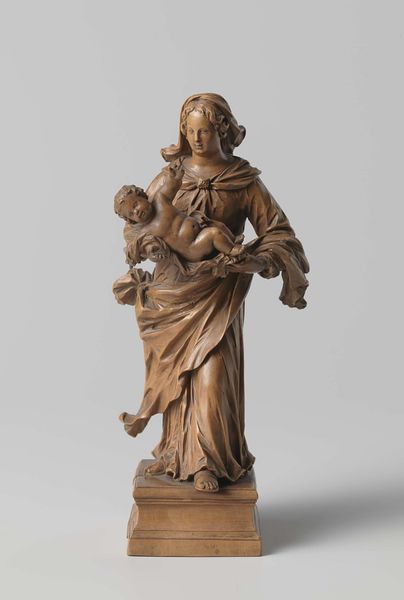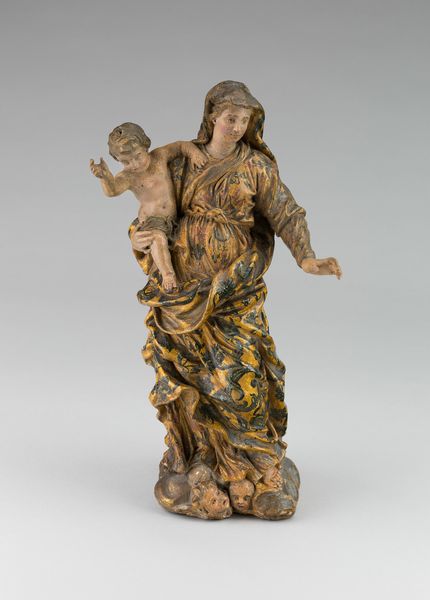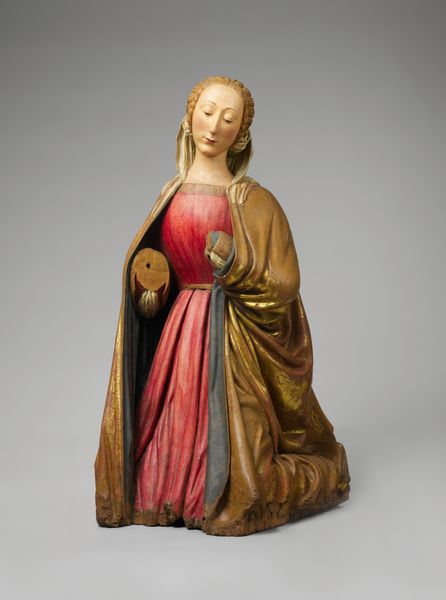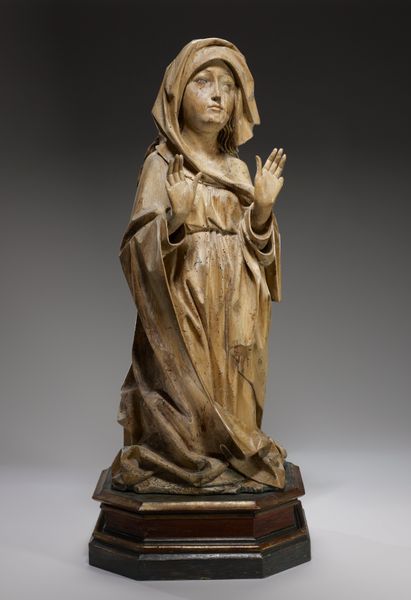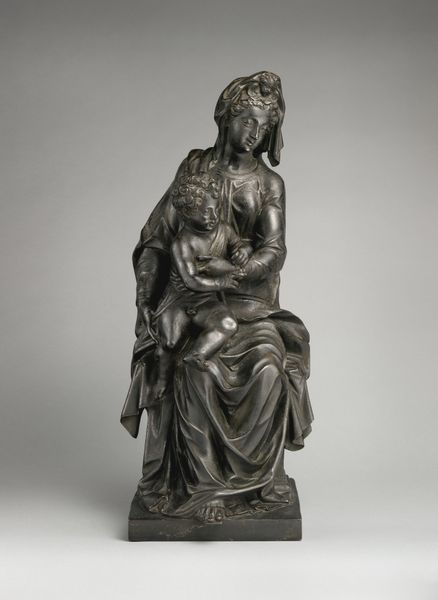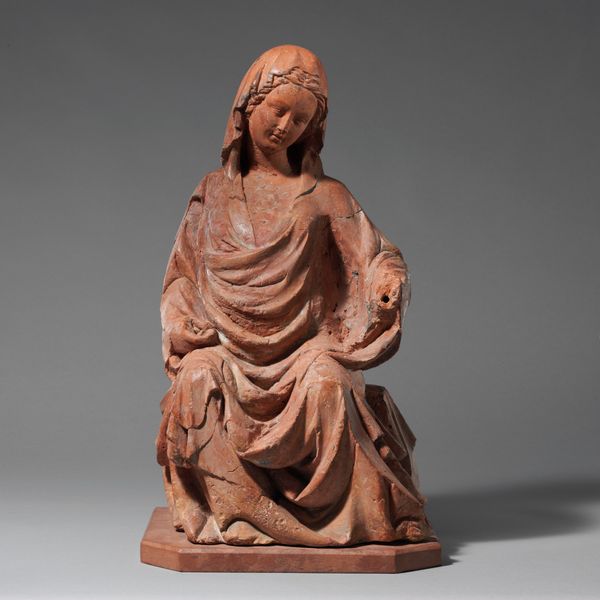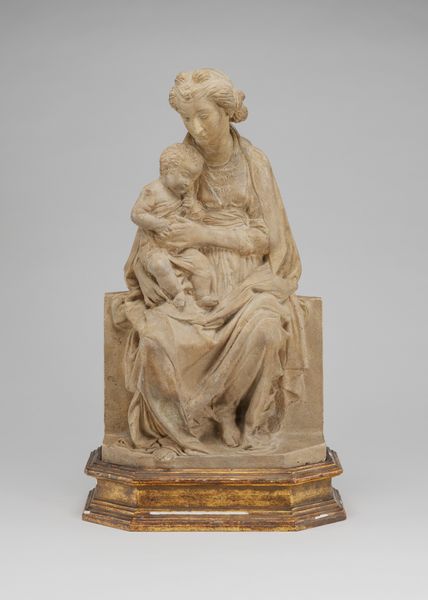
sculpture, wood
#
medieval
#
stone
#
sculpture
#
figuration
#
child
#
sculpture
#
wood
#
medieval-art
Dimensions: Overall: 53 3/8 x 41 1/8 x 27 in. (135.5 x 104.5 x 68.6 cm)
Copyright: Public Domain
Editor: So, this is Claus de Werve's "Virgin and Child," made around 1415 to 1417. It’s a painted wood sculpture, currently residing at the Met. I’m struck by the intimate gaze between Mary and the Christ child. What can you tell us about how this piece might have been perceived in its time? Curator: That’s a wonderful observation! It’s crucial to remember that in the early 15th century, an image like this served a vital function. We’re moving into the late Medieval period, and this sculpture wouldn't just be admired for its beauty. It's designed to provoke devotion and shape societal understanding of motherhood, piety, and power dynamics between religious figures and lay people. Consider who was commissioning these works and where they were displayed. Were they private devotional pieces, or intended for public display in churches? Editor: That makes me think about the accessibility of religious icons at the time. I imagine most people weren't reading religious texts, so images would have carried so much weight. Curator: Precisely! This sculpture isn’t just art; it’s a potent form of visual communication and social instruction. Think about how the sculpture promotes specific roles of women and children. Does this sculpture reinforce or subvert prevailing gender roles and family expectations of the time? Editor: Looking closer, I see a book in Mary's hands. Does this highlight her education or play a part in defining a very specific, didactic relationship with Jesus? Curator: Yes, and that detail places the sculpture squarely within a specific socio-political context. It elevates Mary not just as a mother, but also as a teacher. A teacher of what, exactly? And to what ends? We might also consider where Claus de Werve was based, the Dukes of Burgundy had deep connections to religious institutions, wielding significant influence. The sculpture may then have played a role in conveying the values and policies of a wealthy family. Editor: That's a very different view of the piece from what I was initially thinking. I was focused on the tender moment, but seeing it as a deliberate statement on faith, learning, and societal power relations opens up whole new avenues of interpretation. Curator: Indeed. Examining art through a historical lens allows us to unpack the layers of meaning embedded within the artwork and to understand its profound impact on society. It invites questions that go beyond aesthetics, questioning why it exists in the first place.
Comments
No comments
Be the first to comment and join the conversation on the ultimate creative platform.
